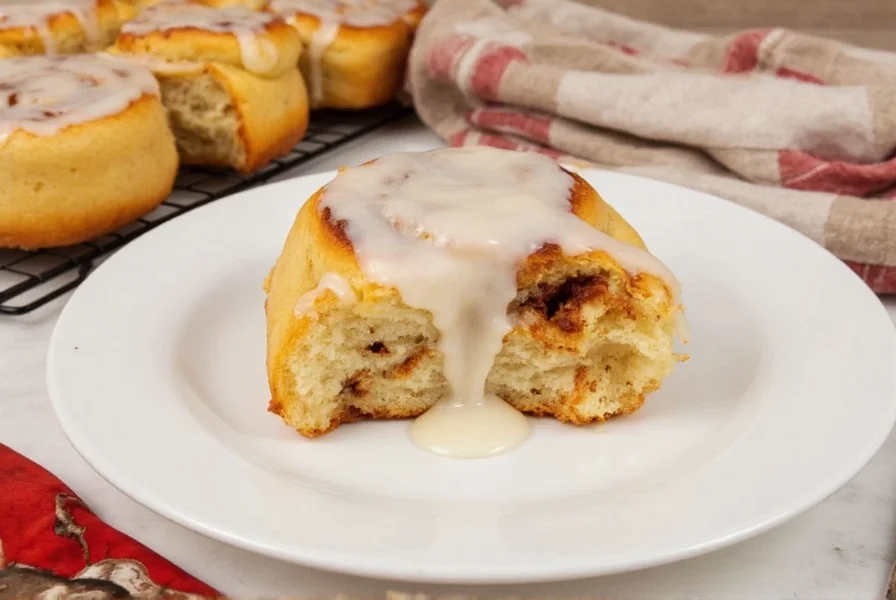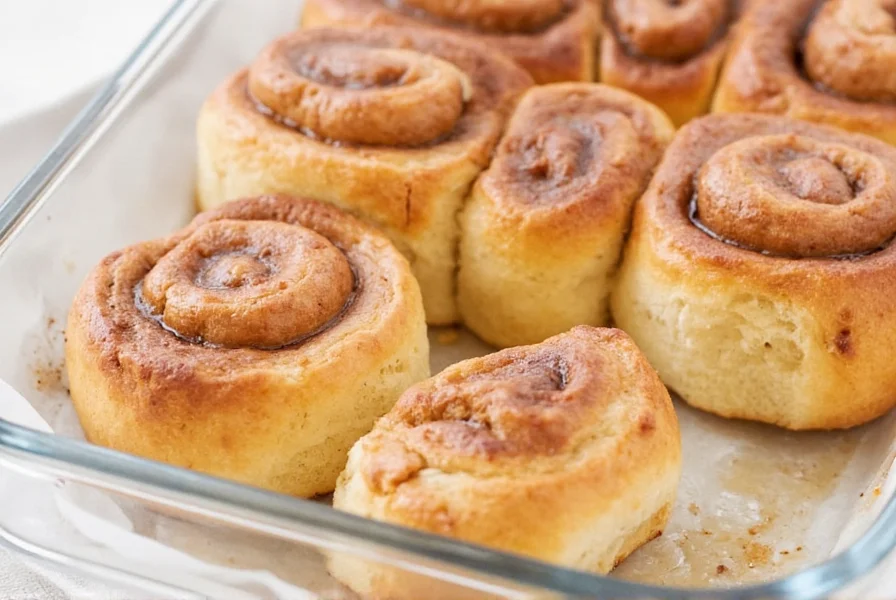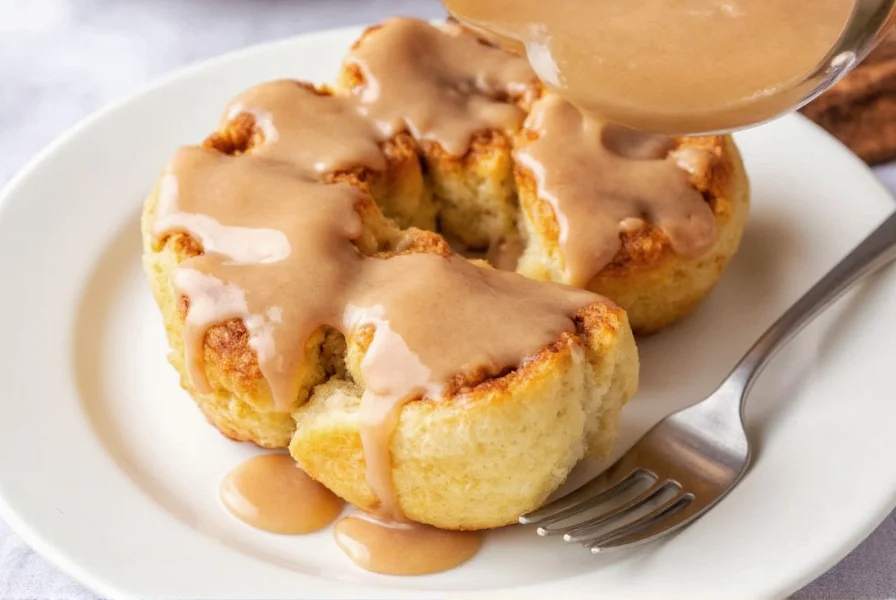Creating the ideal cinnamon glaze transforms ordinary cinnamon rolls into an irresistible treat. While many bakers focus solely on the dough and filling, the glaze provides that essential finishing touch that balances sweetness with subtle complexity. After testing dozens of variations across decades of baking experience, I've discovered that the magic happens when you understand the science behind each ingredient's role.
The Science Behind Perfect Cinnamon Roll Glaze
Unlike standard cake frosting, cinnamon roll glaze needs specific properties to work with the warm, porous surface of freshly baked rolls. The ideal glaze has enough liquidity to seep into crevices while maintaining structure to coat without dripping excessively. This balance comes from understanding how powdered sugar, liquid components, and fats interact.
Powdered sugar (confectioners' sugar) contains cornstarch that prevents crystallization and provides stability. When combined with just enough liquid, it creates that signature glossy sheen that sets slightly without hardening completely. The small amount of fat from melted butter adds richness and helps the glaze adhere properly to the rolls' surface.
Essential Ingredients Explained
Understanding each component helps you troubleshoot and adapt the best cinnamon roll glaze recipe to your specific needs:
| Ingredient | Function | Substitution Options |
|---|---|---|
| Powdered sugar | Provides sweetness and structure | Can substitute 1 cup granulated sugar processed with 1 tsp cornstarch |
| Milk or cream | Adjusts consistency | Half-and-half, almond milk, or even coffee for depth |
| Melted butter | Enhances flavor and texture | Coconut oil or additional milk for dairy-free |
| Vanilla extract | Flavor enhancer | Maple extract, almond extract, or citrus zest |
Step-by-Step Preparation Guide
Follow these professional techniques for flawless cinnamon roll icing with powdered sugar every time:
- Sift 2 cups powdered sugar to eliminate lumps that create uneven texture
- Add 1 tablespoon melted butter and 1 teaspoon vanilla extract to the sugar
- Gradually incorporate 2 tablespoons milk while whisking vigorously
- Adjust consistency by adding additional milk (1 teaspoon at a time)
- Whisk for 30-60 seconds until completely smooth and glossy
- Immediately drizzle over warm cinnamon rolls
The key to how to make cinnamon glaze from scratch that doesn't harden too quickly is temperature control. Your glaze should be slightly warmer than room temperature when applied to rolls that have cooled just enough to handle (about 5-10 minutes out of the oven). This allows the glaze to penetrate the surface without melting completely.

Troubleshooting Common Glaze Problems
Even experienced bakers encounter issues with their cinnamon roll glaze troubleshooting tips. Here's how to fix the most frequent problems:
- Glaze too thin: Add more powdered sugar, 2 tablespoons at a time, until desired consistency
- Glaze too thick: Add liquid incrementally (milk, cream, or even simple syrup) until pourable
- Glaze hardening too fast: Increase liquid content slightly or add 1/2 teaspoon light corn syrup
- Glaze separating: Whisk more vigorously or warm mixture slightly over warm water
- Glaze not sweet enough: Add additional powdered sugar rather than liquid sweeteners
Flavor Variations for Creative Bakers
Once you've mastered the easy cinnamon roll frosting without cream cheese, experiment with these professional variations:
- Cream cheese glaze: Blend 2 oz softened cream cheese with the basic glaze ingredients
- Brown butter glaze: Brown 2 tablespoons butter before adding to create nutty depth
- Citrus-infused: Add 1 tablespoon lemon, orange, or lime zest to brighten the sweetness
- Spiced variation: Incorporate 1/4 teaspoon cinnamon, nutmeg, or cardamom
- Maple glaze: Replace milk with pure maple syrup for distinctive flavor
Understanding the cinnamon roll icing vs glaze difference helps you choose the right texture for your application. Glazes are thinner and designed to soak into baked goods, while frostings are thicker and meant to sit on top. For cinnamon rolls, a true glaze works best as it penetrates the surface for flavor throughout.
Application Techniques for Professional Results
How you apply your glaze affects both appearance and flavor distribution. For the cinnamon roll glaze that doesn't harden too quickly:
- Use a spoon or piping bag with wide tip for controlled application
- Drizzle in a zig-zag pattern across the entire surface
- Apply to rolls that are warm but not scalding hot (about 180°F)
- Allow 5-7 minutes for glaze to set before serving
- For day-old rolls, lightly rewarm before applying fresh glaze

Storage and Reheating Guidelines
Proper storage maintains your thick cinnamon roll glaze recipe quality:
- Glazed rolls keep at room temperature for 2 days in airtight container
- Refrigerate for up to 5 days (glaze may firm slightly)
- To refresh day-old rolls: warm in 300°F oven for 5 minutes before adding new glaze
- Store extra glaze in refrigerator for up to 1 week (rewhisk before using)
- Freeze unglazed rolls, then apply fresh glaze after reheating
When reheating previously glazed rolls, avoid the microwave as it makes the glaze watery. Instead, warm in a 300°F oven for 5-7 minutes until the interior is heated through while preserving the glaze's texture.











 浙公网安备
33010002000092号
浙公网安备
33010002000092号 浙B2-20120091-4
浙B2-20120091-4